Tas: Thermal analysis software
Purpose-built, interoperable programs that facilitate methodical workflows

Thermal Comfort & Natural Ventilation
Data Import/Merge and Export
Daylight & CBDM Simulations
ASHRAE 90.1 Studio for automated workflows
Tas Generic Optimisation and Parametric Analysis
Custom plant room and air-side design
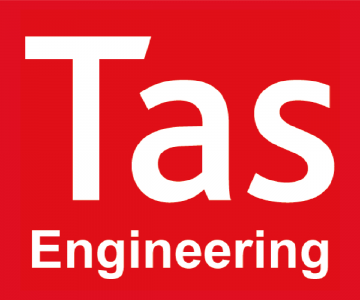
With Tas Engineering you can:
- create 3D geometry
- import/ export BIM file formats
- perform daylight and climate based daylight modeling analysis
- simulate building loads
- create component based HVAC air and water side systems
- simulate HVAC for sizing/ energy/ cost/ CO2
- easily access and visualize all simulation data
- switch between IP and SI units with the click of a button
Scroll down to see more of Tas Engineering
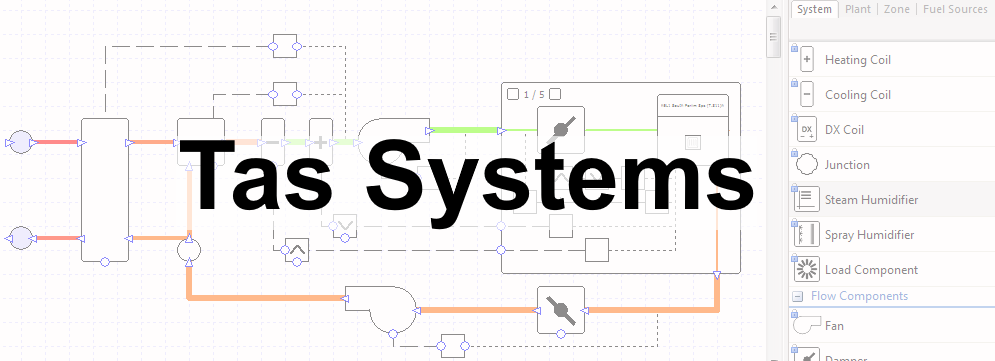
HVAC simulation using Tas Systems
Component Based
Tas Systems is a Component based plant modeling tool with a drag and drop interface.
Fully Customizable
Every component has editable properties with fully customizable control logic.
Schematic Design
Plant models are laid out to resemble HVAC schematics for clarity.
Template Systems
Optional wizard to walk users through setting up common system types.
Assisted setup using the Tas Systems project wizard
Tas Systems includes a project wizard which can optionally be used to create a range of typical setups which can then be further edited if desired. The prepared airside systems include but are not limited to; fancoils, CAV & VAV systems, VRF, chilled beams, and PRM Baseline systems for 90.1 versions 2007, 2010, 2013, and 2016. Waterside systems available through the wizard include but are not limited to combined heat and power (CHP / CoGen) and ground source systems.
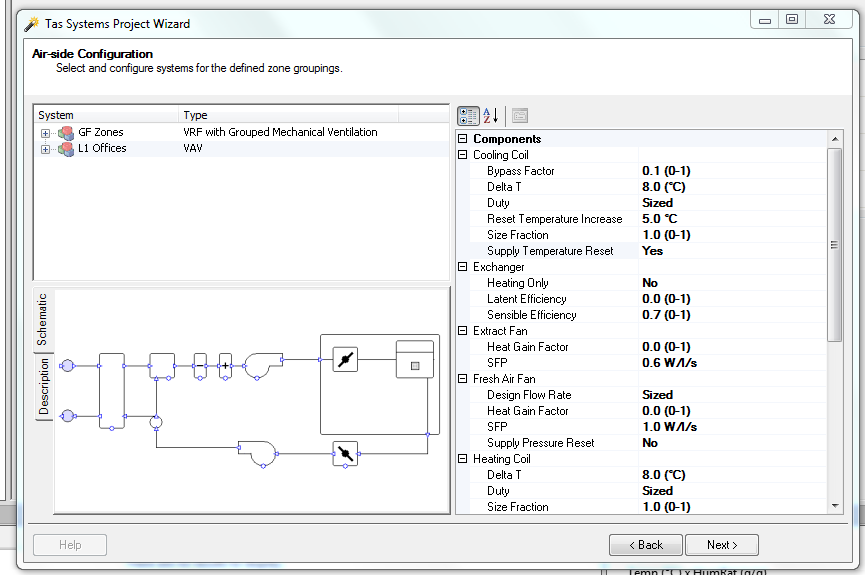
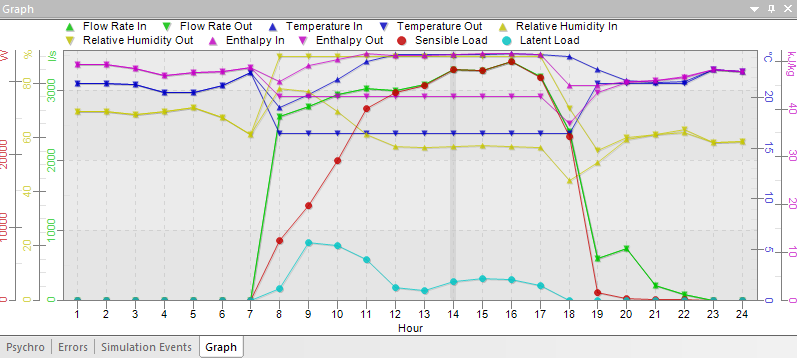
Create and control bespoke systems
Fully customizable controls allow a wide range of component behaviour to be modeled. Even very complex systems can be easily modeled and any system can be added to the library for use on future projects.Full control
Systems can be edited as required to match the real-life setup or to test designs. The component library contains a wide range of equipment with fully editable properties. Custom profiles can be applied to many of these properties to control the equipment, for example the the efficiency of a component could vary with air temperature.- Import manufacturer data to components
- Assisted calculation of component efficiencies for 90.1 baseline systems
- View results on schematic, in graphs, or tabular format
Our User Guides and Manuals provide detailed guides to the components and controls and their settings
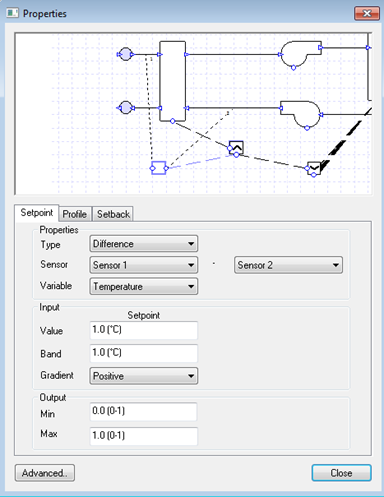
Easy data exploration for QA/QC and system behavior analysis
Data visualization in Tas Systems allows easy exploration of model results for all components, controllers, pipes, and ducts, for each hour, in both the plant side and air side schematics.
Results can be displayed on the schematics showing temperature, pressure, or flow. Psychrometric data is simultaneously visible with graphical and tabular data for the component being investigated. The video below shows some simple data exploration of an chilled beam air side system serving 5 zones.
Reports can be easily generated as PDFs or Excel spreadsheets. The report generator is a great way for the user to extract the desired results in an easily interpreted and accessible format over the time period of interest, be that annual, monthly, daily or hourly.
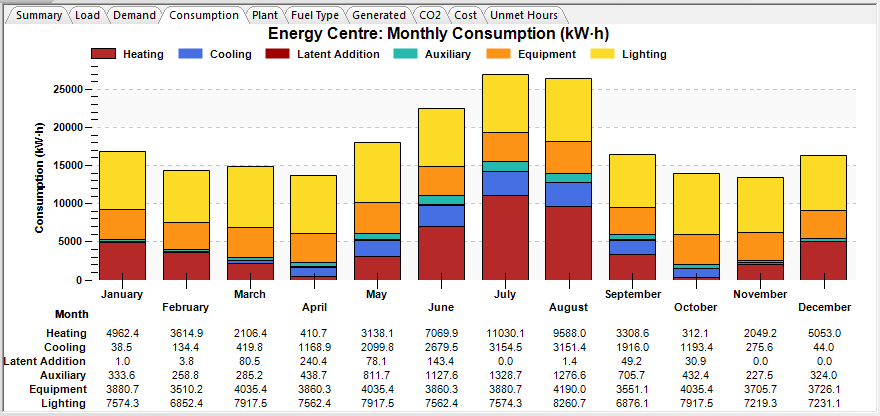
Co-ordinate your project
Tas Systems is fully integrated with the other components of the Tas package and results can be imported from multiple simulation files. This allows engineers to work concurrently on different parts of the building then merge their results together to work on the HVAC.
Case Studies
ASHRAE 90.1
140-1 compliant software for 90.1 versions 2007-2016
Tas Engineering includes a 90.1 studio which does all the hard work for you, generating baseline building geometry and lighting gains for 90.1 versions 2007, 2010, 2013, and 2016 as well as providing tools for calculating efficiencies for baseline equipment based on sized capacity, fuel type, climate zone, etc.
Tas is compliant with ASHRAE 140-1 2014, 2007, and 2004, as well as being a qualified 179D software for Tax deductions.
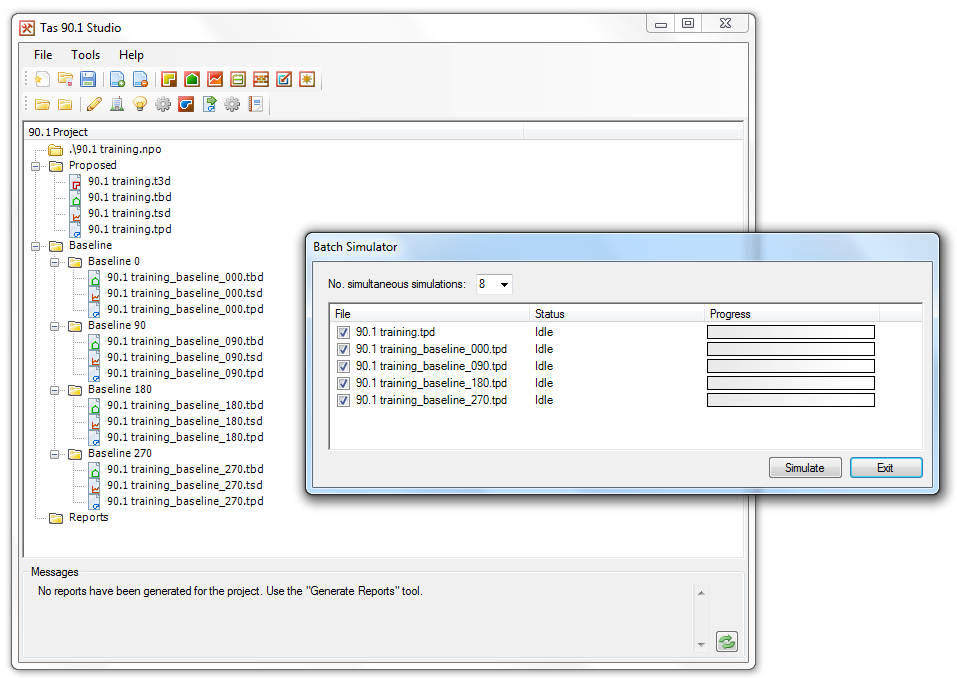
Baseline systems generated and efficiencies calculated
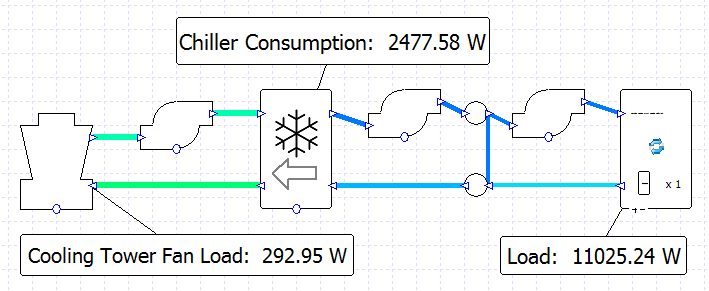
Our studio tools automate the process of setting efficiencies for fans, heat exchangers, boilers, chillers, and heat pumps, and the calculated efficiencies are displayed clearly to the user. Throughout the software, units of measurement can easily be switched from SI to IP & vice versa at any time without needing to close the software.
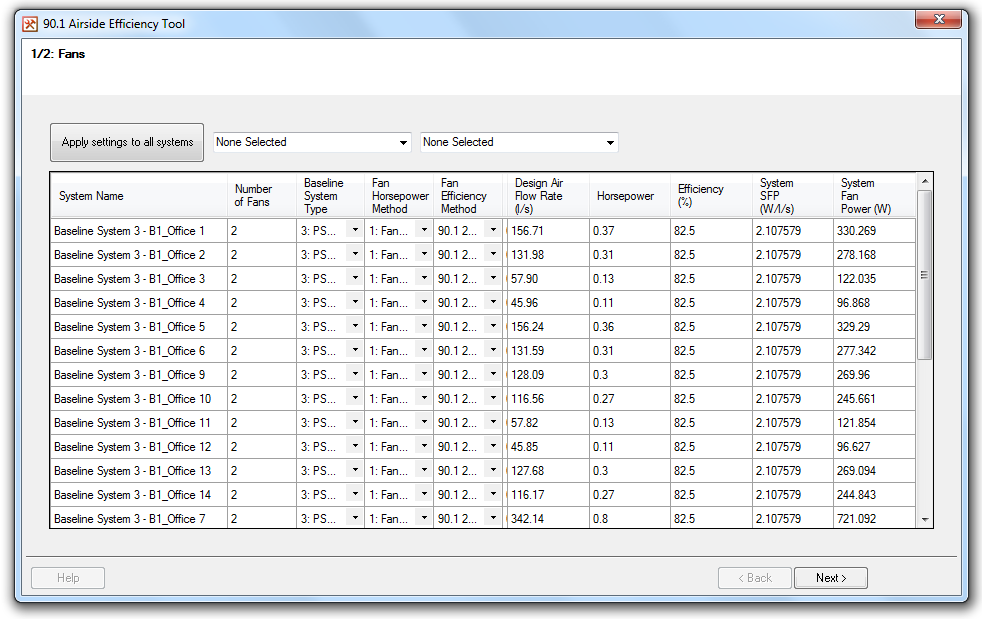
Daylight Simulations
Climate Based Daylight Modeling
Multi-core distributed Climate Based Daylight Modeling for rapid design iterations.
Daylight Factors
Fast daylight factor calculations using a radiosity engine for accurate results.
Daylight Rendering
Render a high quality raytracing based 3D view of your building at any hour of the year for shading and shadow casting analysis.
Right to Light
Equivalent First Zone, Daylight Distribution, Vertical Sky Component, Permanent Overshadowing.
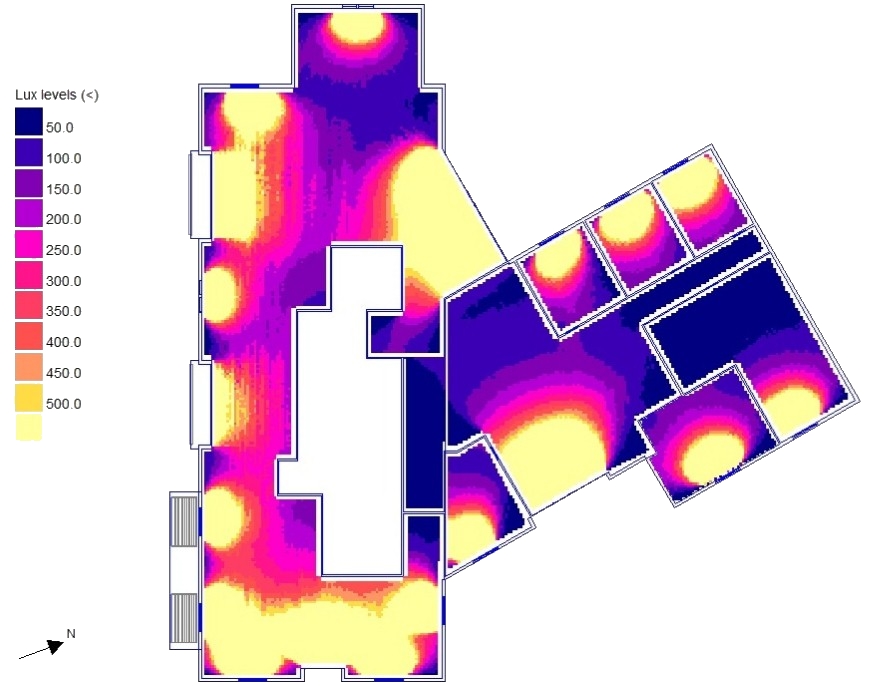
Tas Generic Optimization
A utility for parametric simulations & variable optimization
TasGenOpt intelligently combines GenOpt from Lawrence Berkeley National Laboratory with a powerful c# scripting interface in order to achieve incredible flexibility and design options. This utility allows parametric analysis as well as an optimization facility
Optimization
Sometimes, it’s easy to understand the effect of a variable on your building: Increasing the boiler efficiency results in a reduction in CO2 emissions. Other times, it’s not so clear.
Imagine adding more insulation to your external walls – the U-value will decrease and the heating demand will decrease, but this may have some other effects:
- Increased risk of overheating
- Increased cooling demand
With some variables, there is an optimum value that balances the effects a variable has. One way to find this optimum value is to perform many simulations with different values, but this can be slow and time consuming.
TasGenOpt solves this problem by doing the hard work for you, automatically minimizing the number of simulations required to find the optimum value through parametric analysis.
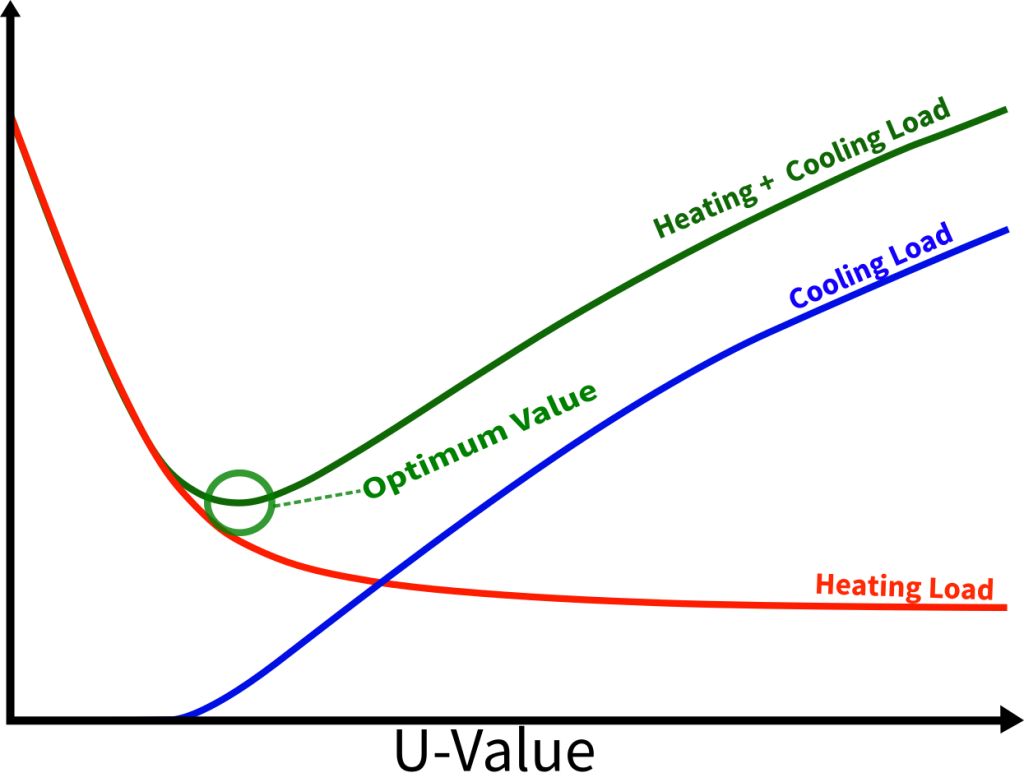
Parametric Analysis using TasGenOpt
Simply select the parametric option, and the program will dynamically change your input variables in the range you specify, notify you once it’s done and output the results visually.
Multiple variables
There is no limit to the number of input and output variables using TasGenOpt. This means you can balance everything, for example you could set parametric variables for the angle of shades, the window dimensions, and aperture openable proportion with the aim being to minimize energy consumption whilst maximizing thermal and visual comfort.
It is possible through parametric analysis, using the fast Tas 3D Modeler daylighting engine, to adjust the shades to get the best daylighting result. With daylighting, it’s important to make sure the space isn’t too bright or too dim, so a careful balance of the parameters is needed. The below example does just this for a typical classroom in a new school project:
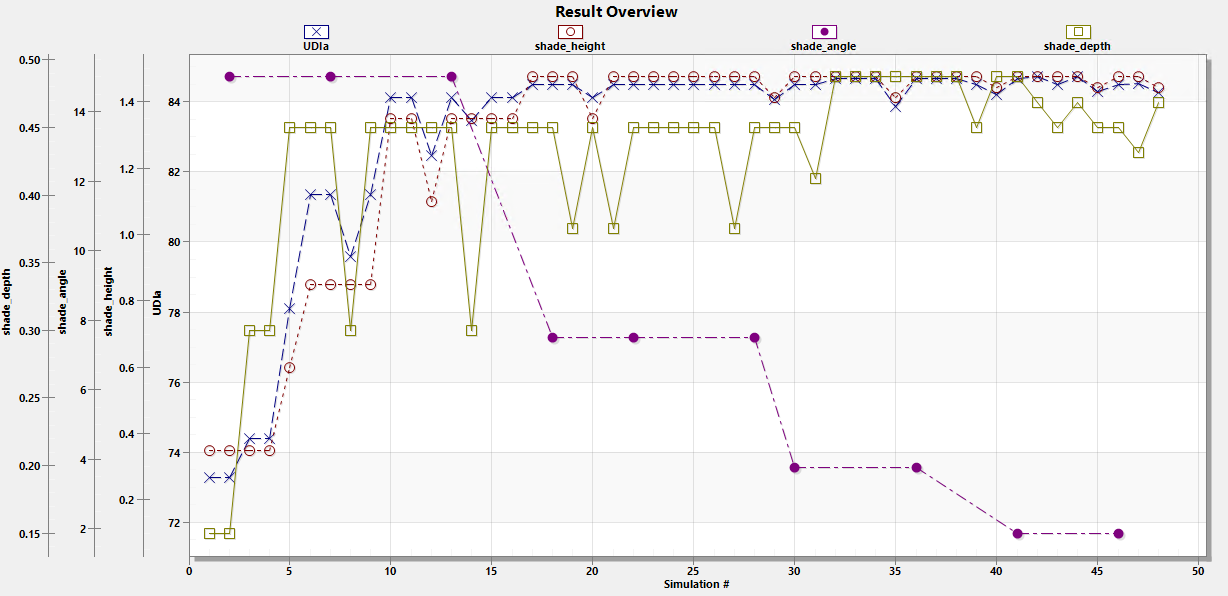
Get started quickly
In order to get started quickly, TasGenOpt has a number of useful resources:
- Reusable Script Library
- Example Scripts
- Detailed Documentation
- Skilled Technical Support
Reusable script library
TasGenOpt has a library of useful scripts that you can expand and share with others. This can save valuable time on future projects.
Example scripts
TasGenOpt comes with example scripts demonstrating how to perform common tasks, and each has detailed comments explaining what the script does and how it works
Detailed documentation
Not only does the TasGenOpt documentation explain how the software works, it also includes a series of detailed ‘walk through’ examples that will introduce you to the basic concepts and lead you to solve your first optimization problem.
Skilled technical support
Our entire support team works very closely with our software developers and as a result, will be able to provide the very best advice for writing optimization scripts.
Comfort Analysis
Assess the expected comfort levels in your design
- Overheating Potential
- Radiant Environment
- Perceived Comfort
- Fresh Air Levels
- Clear & helpful results viewer
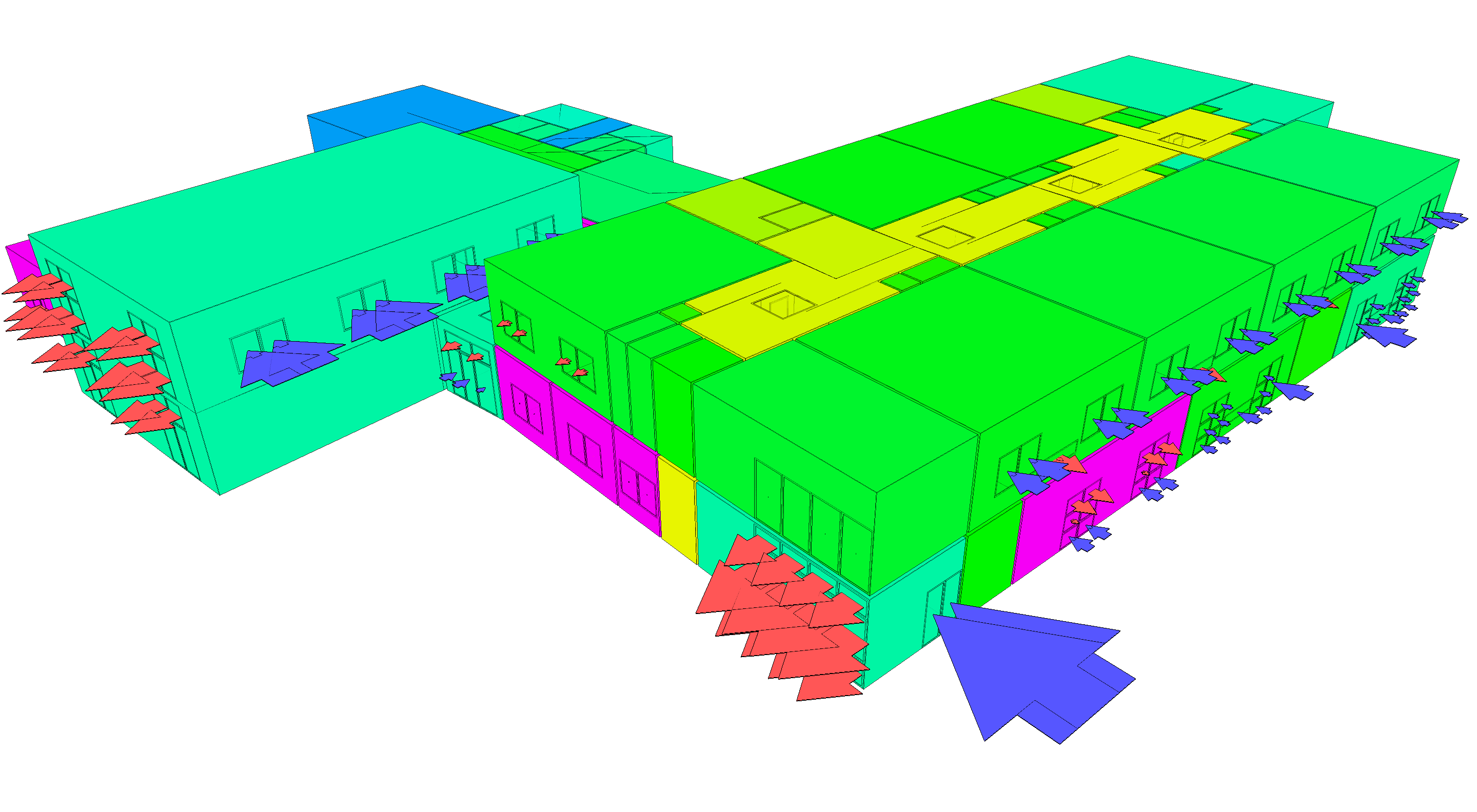
Data Import & Export
Tas has a multitude of data import & export options enabling it to be an integral part of a BIM workflow.
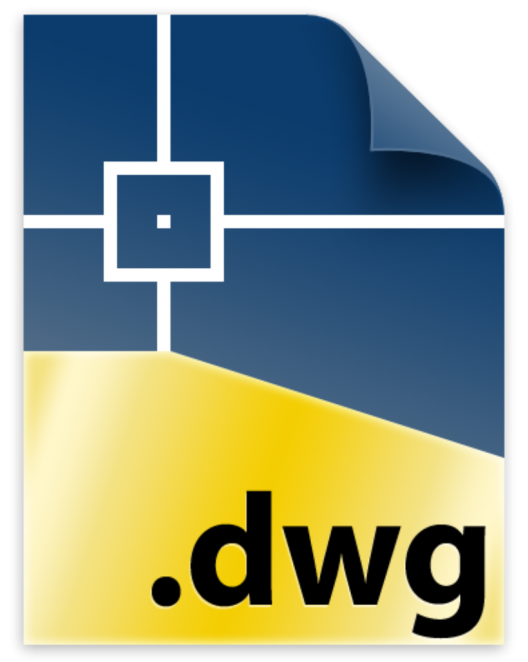
DWG
2D DWG import allows tracing of new geometry, and 3D DWG shade surface import allows easy modeling of complex shading.

gbXML
Tas intelligently repairs common issues with gbXML geometry.

IDF
Exchange data with EnergyPlus. Import or export geometry, building fabric, gains and schedules, and even import shading data for a ready-to-simulate building data file.

DOE .INP
Import geometry, building fabric, and internal condition data from DOE-2 INP files.
SI & IP Units – Its just a simple switch between units of measurement